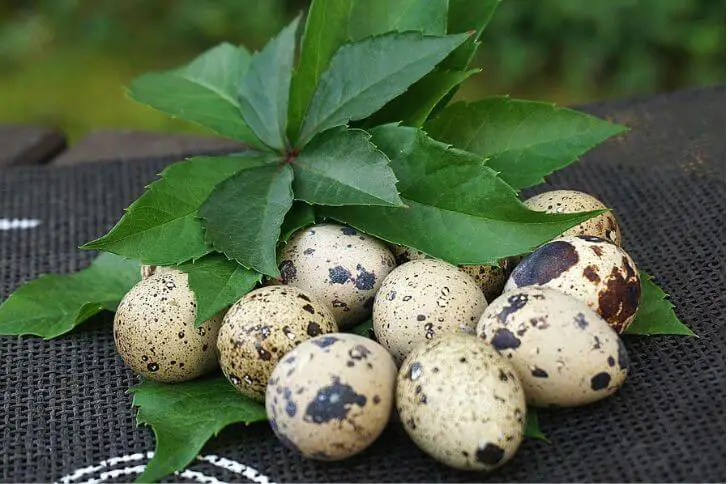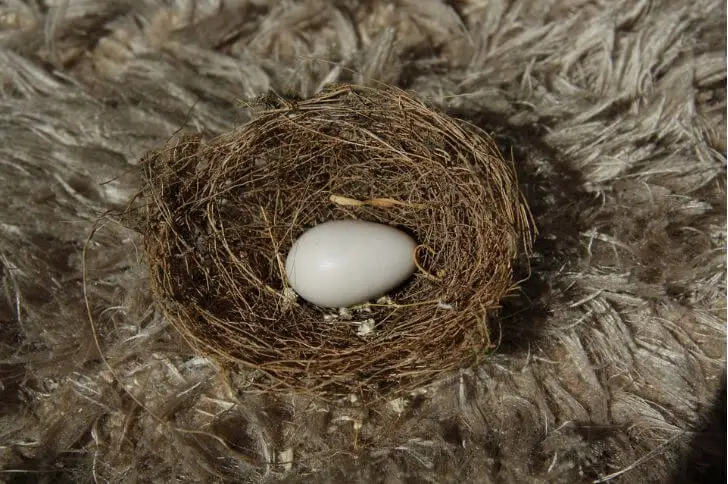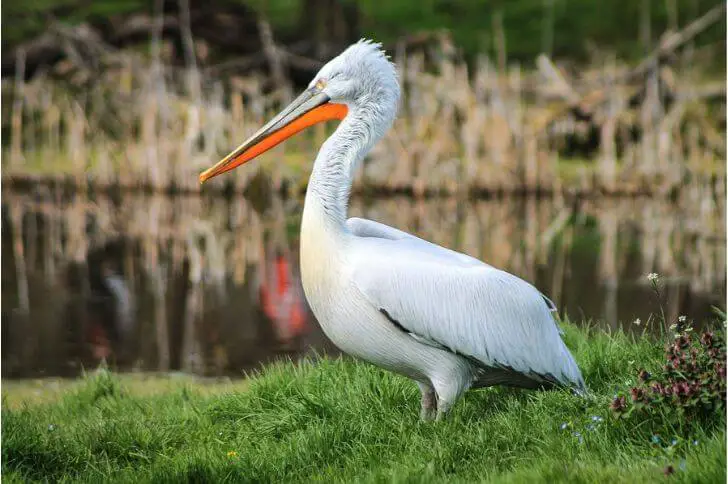What do chickadee eggs look like? If you’re like me and love to learn the life cycle of some common birds in the US, you’ll love the info-packed article below.
We’ll discuss the diverse family of chickadee birds, from their nesting habits to the color of the eggs to how to identify babies from different members of this family.
Chickadee Nests, Eggs & Babies Facts
Nest construction
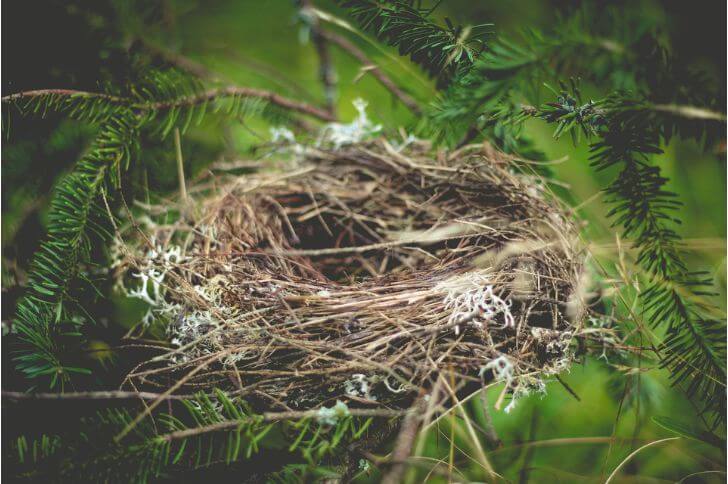
Until recently, the construction of a chickadee’s nest was largely undocumented. However, recent field studies have revealed that this small bird constructs a fairly elaborate platform. Nests can be built anywhere where there is enough material.
Like pelicans, female chickadees pick the nesting site then both parents the chamber. Once done, the female will then use moss, sticks and other materials to weave a 2.4-inch cup-shaped nest out of moss, sticks and twigs. She’ll then line the nest with softer material.
It’ll take her anywhere from 5-7 days to build the nest. During this time, the males job is to bring her replenishment.
Where do chickadees build their nests?
Chickadees are cavity nesters, meaning they build their nests in natural or man-made crevices. Out of all the bird species in North America, chickadees are the most likely to use nest boxes.
Chickadees typically prefer a hole that is 5-6 inches (13-15 cm) deep and just wide enough for the bird to fit through. Nests can be found in many different places including: tree cavities, abandoned woodpecker holes, birdhouses, mailboxes, and even between the slats of vertical blinds!
When do chickadees nest?
Black capped chickadees nest in the mid spring, before the leaves have come out on the trees. If the weather is warmer, females will start laying eggs earlier than usual. Also, females will start laying eggs within a week after completing the nest building process.
How many eggs do chickadees lay?
On average 6-8 eggs but can be 9-13. After the chickadee nest is built, these North American birds start laying eggs in the first weeks of April. During the nesting season, these birds lay one egg per day mostly in the morning.
What color and size are the eggs?

0.6 inches long and 0.4-0.6 inches wide. The eggs are about the same size as a house wren eggs. Black-capped chickadee eggs are a white but can have reddish-brown spots or specks. Other birds in this family have similar colored eggs.
Carolina chickadee eggs are 0.6 inches in length and range from white to creamy-white with reddish spots.
Chestnut-backed chickadee eggs are small with brownish-red speckles. The spots are concentrated on one side.
How long do eggs take to hatch?
The average time it takes for a chickadee egg to hatch is around 12-13 days. Within 12-24 hours, you’ll notice the chickadee nestlings breaking out of the shells.
Note that during the incubation period, the female is the only one who sits on the egg. She’ll occasionally get up to stretch her legs. Males may bring her food once in a while.
What do baby chickadee look like?
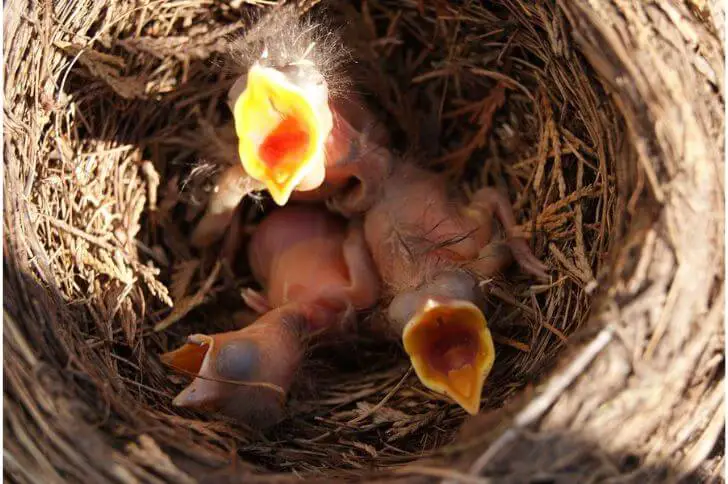
Young birds have different appearances depending on the family. Here is how bird watchers can identify chickadee nestlings from different members of this bird species.
Black capped chickadee babies hatch after about 2 weeks. Chicks are naked with the eyes tightly closed. If you move close to their nesting box you’ll notice the grayish downy feathers. Within two weeks before fledgling you’ll notice feathers growing.
A juvenile black capped chickadee has similar plumage as an adult bird; Black cap, white cheeks, gray back and whitish belly. Take note of the dark eyes.
Mountain chickadee babies are also naked with eyes closed. They also have some feathers on their back and head. They are helpless, needing constant care from their parents.
Within a few weeks young birds change plumage to spot a grayish body, black-white head, and black throat.
Carolina chickadee can incubate eggs for up to 15 days, depending on the temperature. Their chicks are also naked with small patches of downy feathers on their wings, back and head.
As the feathers grow you’ll notice juveniles have the same plumage as the adult Carolina chickadee. Carolina chickadee babies are soft gray with a black cap and throat and white cheeks.
How long do nestlings stay in the nest?
About 16 to 19 days. However, it depends on a variety of factors, including the time of year, the weather, and how many eggs are in the nest. Baby chickadees may leave the nest as soon as 14 days after hatching, or they may stay in the nest for up to three weeks.
The length of time that baby chickadees spend in the nest can also vary depending on what type of birdhouse they are nesting in. If there is plenty of food and shelter available for them outside of the nest, they may leave sooner than if there is not.
Generally speaking, though, baby chickadees will stay in the nest anywhere from 16 to 20 days.
Eating habits
What do baby chickadees eat? These birds are omnivorous, which means that they eat both plants and insects. Parents primarily feed insects like tiny caterpillars to their chicks. They will also consume seeds, fruit, and nectar.
In the winter, chickadees rely heavily on insects for food since there are fewer available plant sources. If you have bird feeders in your yard, you can add black oil sunflower seeds, which are higher in calories compared to other birds’ food.
What to do when you come across eggs
When you come across a nest of chickadee eggs, the best thing to do is leave them alone. Chickadees are cavity nesters, which means they typically nest in tree cavities, birdhouses, or nests that other animals have abandoned.
If you are lucky enough to find a nest of chickadee eggs, it is best not to disturb it. The mother will likely be incubating the eggs and if you touch or move the eggs she will abandon the nest. It is also important not to scare the mother away from the nest. If she feels scared or threatened she will abandon her eggs.
Related Read: Learn more about adult chickadee and other birds of Yellowstone
FAQs
How many babies do chickadees have?
They typically have six to eight eggs in a clutch, and with the female taking charge of incubation duties. Once the chicks hatch, both parents feed them until they are able to fledge, or fly from the nest.
How many times a year do chickadees lay eggs?
Chickadees are known to be prolific egg layers, with some individuals laying eggs up to 13 eggs during the breeding season. These birds have a single brood each year. Although the timing of egg laying varies depending on the location and climate, it typically occurs in spring and early summer.
Do chickadees share a nest?
Chickadees are known for being social birds, and they often form pairs that stay together for the duration of the breeding season. These pairs will work together to build a nest and incubate eggs. Once the chicks hatch, both parents will help to feed and care for them.
What kind of bird houses do chickadees like?
There are many different types of bird houses, but which one do chickadees prefer? Chickadees like a small and simple nest box. They don’t need a lot of extra features and they prefer a dark interior. Try to avoid bright colors and make sure there is a perch near the entrance so the birds can easily get in and out.
Do chickadees clean out their nests?
Research found that chickadees do remove old nesting material from their nests, but they also add fresh material — often right before laying eggs. So while they may not completely clean out their nests, they do keep them tidy enough to lay eggs and raise chicks.
Why do chickadees bother with all of this nest-cleaning business? One theory is that it helps to keep the nest sanitary and free of parasites. Another possibility is that adding fresh material helps to insulate the nest against heat and cold. Whatever the reason, it’s clear that chickadees take their nest-cleaning seriously!
Where do nestlings go after fledgling?
Chickadees are known for being one of the most adaptable birds when it comes to their migration habits. Although they are mostly permanent residents in their breeding range, chickadees will occasionally migrate short distances to lower elevations or other parts of their range in winter.
It was once believed that chickadees who had fledged did not return to their natal territory, but recent research has shown that a majority of chickadees do return to their natal territory after fledging.
Does the female or male chickadee build the nest?
Females take charge of all nesting duties including finding the site, gathering coarse materials, and building the nest.
How often do chickadees feed their babies?
Chickadees, like most birds, feed their babies a few times a day. The chicks are fed insects at first, and then graduate to seeds as they get older.
What do you do if you find a chickadee chick?
If you find a baby chickadee, the best thing to do is leave it alone. Baby chickadees can usually take care of themselves, and if left undisturbed, they will eventually fly away. However, if you are concerned for the bird’s safety or want to help it get back to its nest, there are a few things you can do.
If the baby chickadee is on the ground, try putting it back in the tree where you found it. If that’s not possible, place it in a nearby bush or clump of grass. Make sure to keep an eye on the bird and move it back to a tree as soon as possible.
If the baby chickadee is in a tree but not in its nest, you can try putting it back in the nest.
What time of day do chickadees fledge?
Chickadees are one of the earliest birds to fledge, typically leaving the nest within two weeks of hatching. The time of day that chickadees fledge varies depending on the location and time of year.
In general, chickadees fledge in the morning or early afternoon. Fledgling is a risky process, and chickadees often fall from trees while learning to fly. Despite this risk, fledging is a necessary step for young chickadees to become independent and successful adults.
What are baby chickadees called?
They may be called babies or chicks. In the United States, baby chickadees are usually referred to as chicks.
Are chickadees friendly?
Yes, chickadees are friendly. They are very curious and will come right up to you to see what you are doing. I have never had one try to bite me or anything like that. They are definitely a fun bird to watch and interact with.
Chickadees are known for their friendly behavior; they will often come right up to people and check them out. They are also very curious birds and will watch everything you do. While chickadees aren’t aggressive, they can sometimes be territorial around their food sources.
Do baby chickadees drink water?
Yes, baby chickadees drink water. They learn how to do it from their parents. The parents will dip their beaks into the water and then bring the water to the baby’s mouth. Baby chickadees learn how to do this by watching their parents.
Hi, my name is Steve. My friend and I started the spanishbirdguides.com to share our passion with other like-minded people. So, if bird watching is your thing, you’ll love this blog. I’ll share what I’ve learnt about both local birds and those found in other parts of the world. Also, I’d love to hear your experiences.
